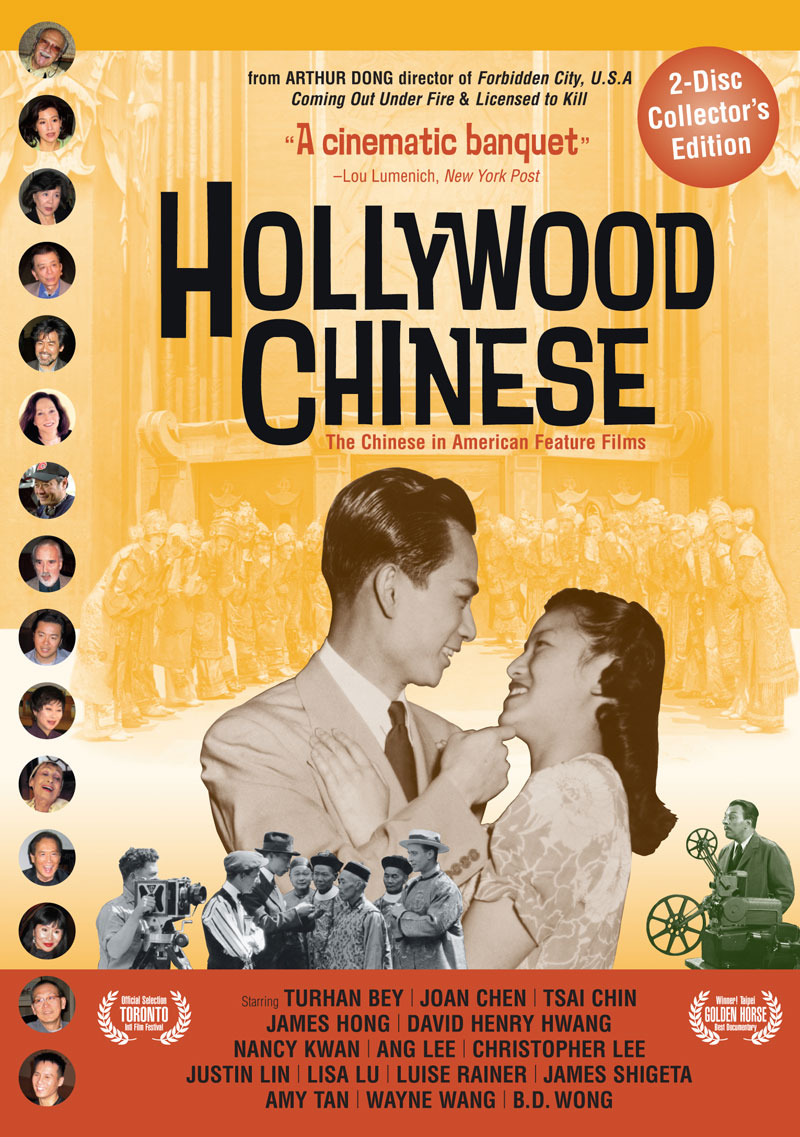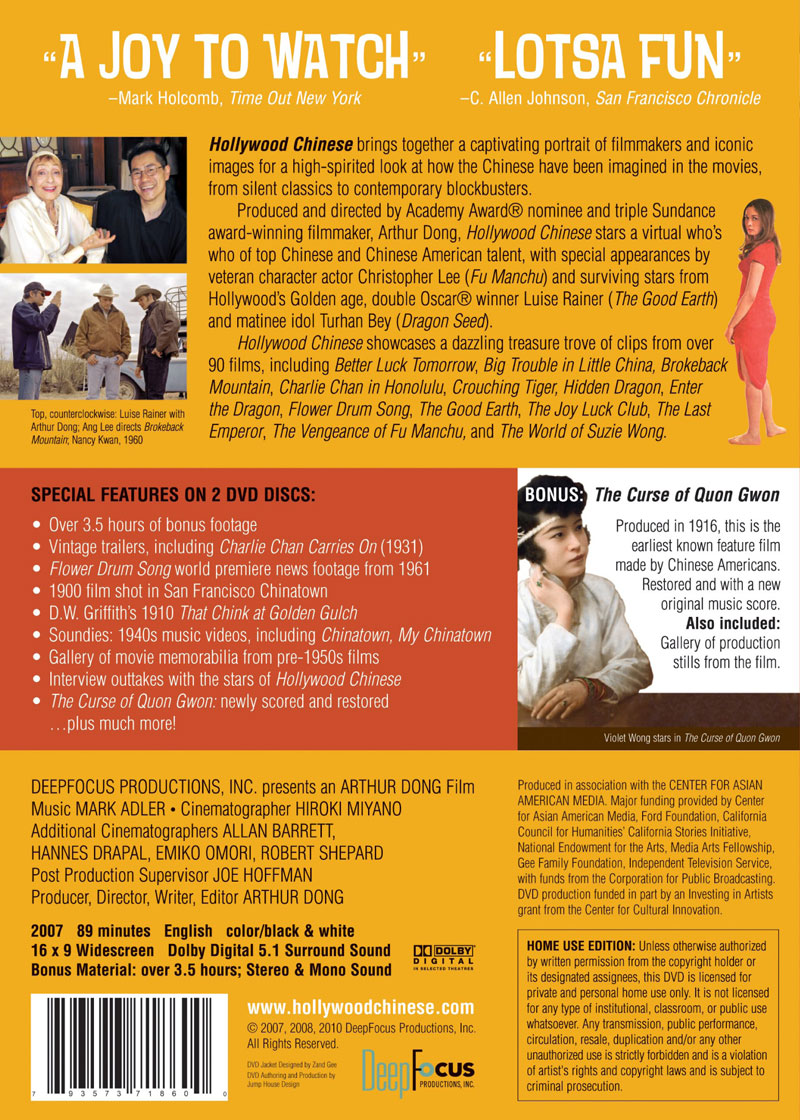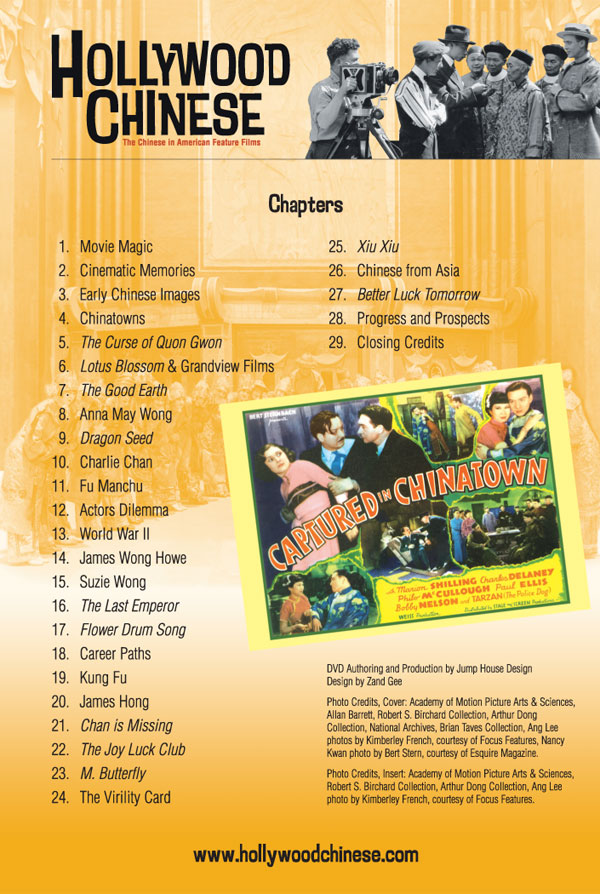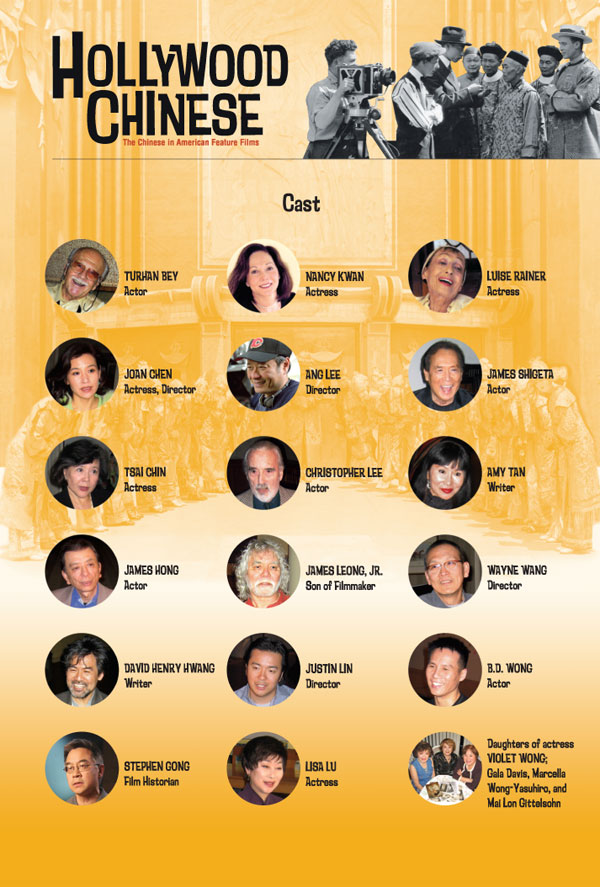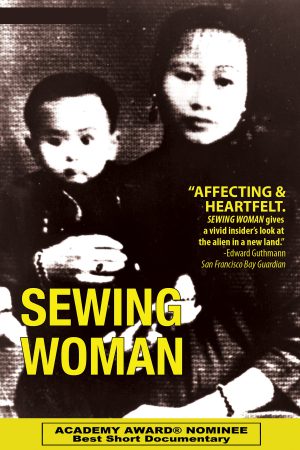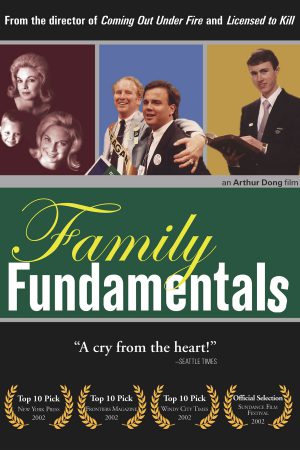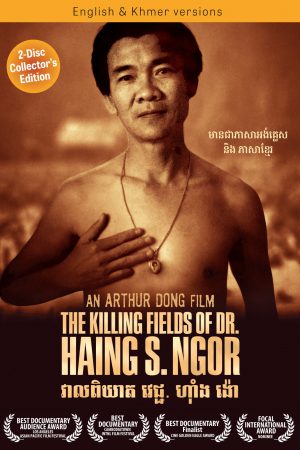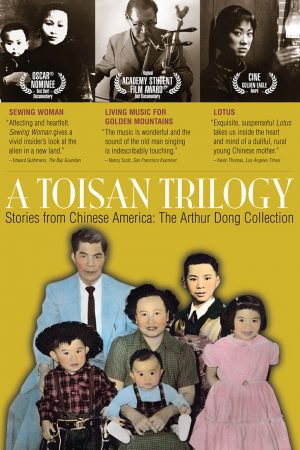Description
2007 (DVD content, 2010)
89 minutes, plus 3.5 hours bonus material
English
16 x 9 Widescreen. Some 4:3 material has been formatted for widescreen presentation.
Dolby Digital 5.1 Surround Sound. Bonus material: stereo, mono, and silent.
Chapter Selection
4-page full color insert
31-page study and discussion guide
Bonus material includes:
- The restored and newly scored 1916 film, The Curse of Quon Gwon. Restoration of the found 35mm nitrate film was produced by the Academy Film Archive in 2005, and in the following year, the Library of Congress selected The Curse of Quon Gwon for the National Film Registry.
- A trio of Soundies including 1940s renditions of Chinatown, My Chinatown and Where’s the Chicken in the Chicken Chow Mein, performed by white entertainers in faux Chinese settings. Soundies are short musical films produced in 1940-1947. A precursor to music videos, they were projected on coin-operated film jukeboxes in bars and restaurants.
- A selection of 1900s paper prints from the Library of Congress collection, including That Chink at Golden Gulch, an early attempt by Broken Blossoms (1919) director, D.W. Griffith, to portray a somewhat sensitive story about the Chinese in America.
- A gallery of movie memorabilia from pre-1950s Hollywood films with Chinatown settings. This selection of lobby cards, posters, and stills are from Dong’s personal archive of over 1,200 pieces that were the basis for the landmark exhibition, “Hollywood Chinese: the Arthur Dong Collection,” at the Los Angeles-based Chinese American Museum.
- Interview outtakes featuring the stars of Hollywood Chinese who offer extended dialogues on topics such as Charlie Chan, Flower Drum Song, Fu Manchu, Suzie Wong, yellowface, stereotyping, and the Chinatown mystique.
- Plus much, much more!
Film & History: An Interdisciplinary Journal of Film and Television Studies, Volume 39.1 (Spring 2009), Published by Center for the Study of Film and History
Film Review by Jonathan J. Cavallero (excerpts)
With Hollywood Chinese, award-winning director Arthur Dong has provided a detailed investigation of the relationship between Chinese American culture and Hollywood film. Throughout the documentary, Dong balances an interest in Hollywood’s depictions of Chinese American characters with a critical analysis of how Chinese Americans’ self-representations have both challenged and perpetuated dominant stereotypes. Dong’s interviews with directors like Wayne Wang and Ang Lee, actors like Joan Chen, Nancy Kwan, Christopher Lee, and Luise Rainer, and writers like Amy Tan and David Henry Hwang laud these individuals’ accomplishments while challenging the potentially regressive aspects of their works. This is a film that refuses to sugarcoat or oversimplify what is a complex history, and it is to be commended for its willingness to see Hollywood movies as a site where artistic expression, commercial pressures, ethnic identities, and socio-cultural norms intersect.
The documentary’s scope is remarkably expansive, especially given its 89-minute running time. Movies and filmmakers from every era of Hollywood history are discussed, and the major debates surrounding the representation of Chinese Americans are confronted. Among other questions, the film debates where the line between historical accuracy and artistic license should be drawn, if stereotypical representations can be progressive and if progressive representations can be stereotypical, what the relationship between Chinese ethnicity, gender, and sexuality is in Hollywood movies, and why Hollywood has become fascinated with Chinese actors, directors, and action film aesthetics in recent years. By interviewing both Chinese American actors and Caucasian actors who have played Chinese characters, the film is particularly adept at simulating debates over the morals and ethics of ethnic representation on the one hand and the economic imperatives of being a working actor in an industry often dominated by box office revenues and stereotypes on the other. Other compelling discussions center on martial artistry and Hollywood’s troubling tendency to cast Chinese actors in Japanese roles and Japanese actors in Chinese roles. Hollywood’s inability or unwillingness to distinguish between Japanese and Chinese demonstrates an obvious degree of ignorance, which Dong’s film works to address.
Hollywood Chinese is both entertaining and highly informative, and this makes it an excellent choice for a class on ethnic representations. Throughout the documentary, film archivist Stephen Gong offers a critical perspective that encourages viewers to interrogate the relationship between filmic representations of Chinese Americans and their influence on a mass audience’s understanding of Chinese peoples and cultures. Gong is careful to outline the complexities of this situation, resisting the idea that cinematic representations are easily categorized as positive or negative while forwarding a perspective that sees the relationship between film and culture as complex and multifaceted.
(Publication note: a study guide to accompany the film has just been released, significantly increasing its usefulness as a teaching resource.)

